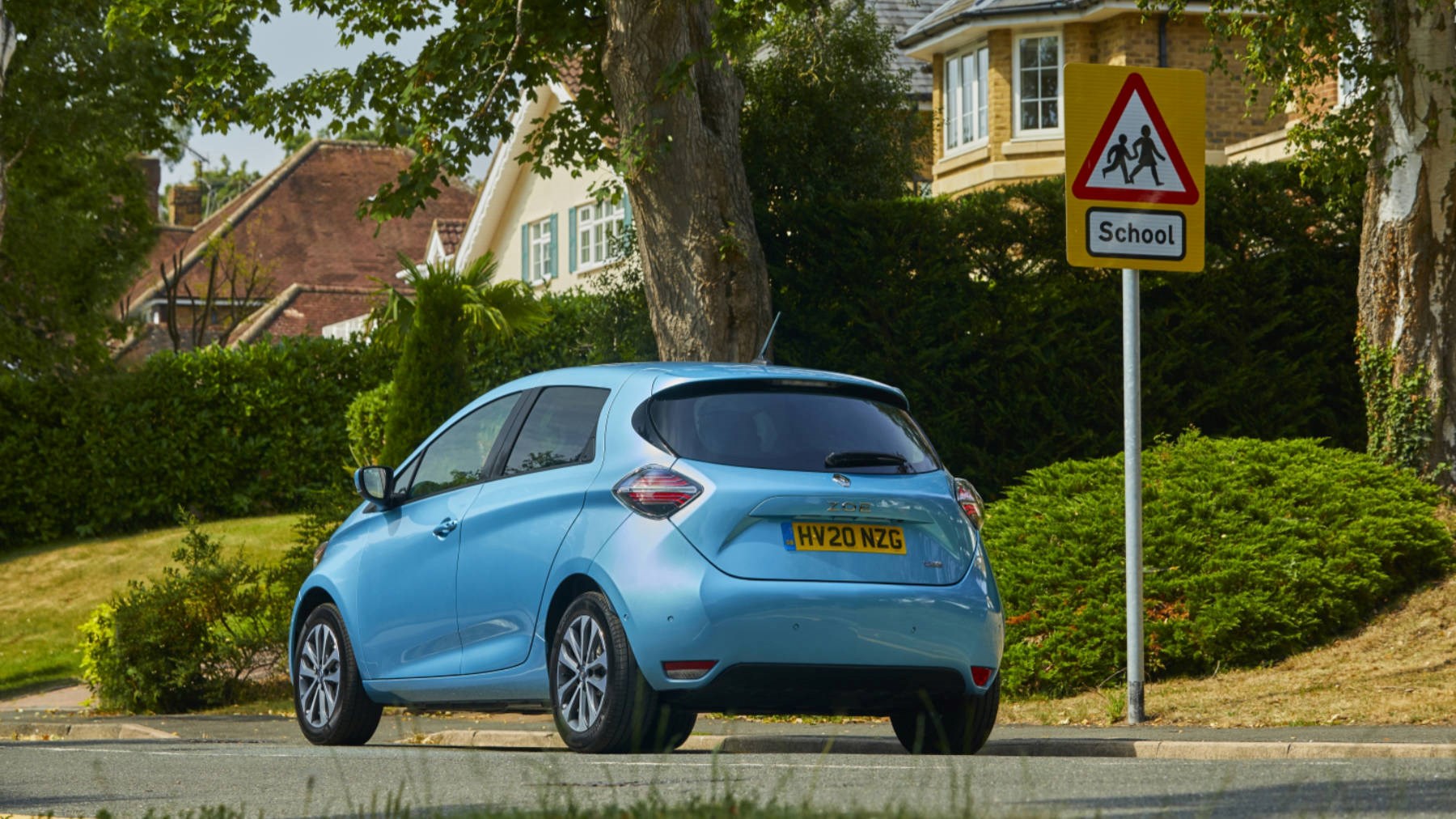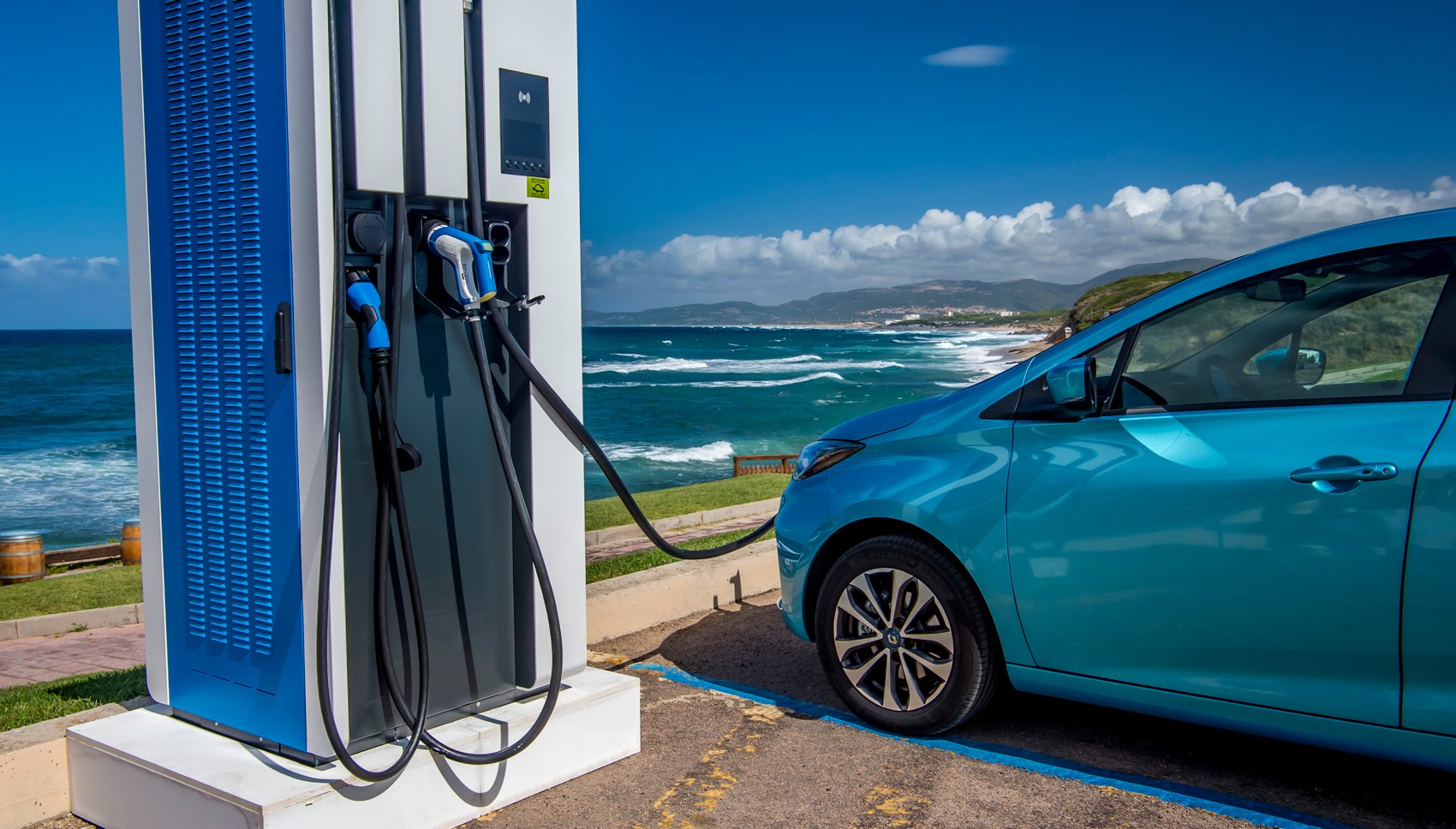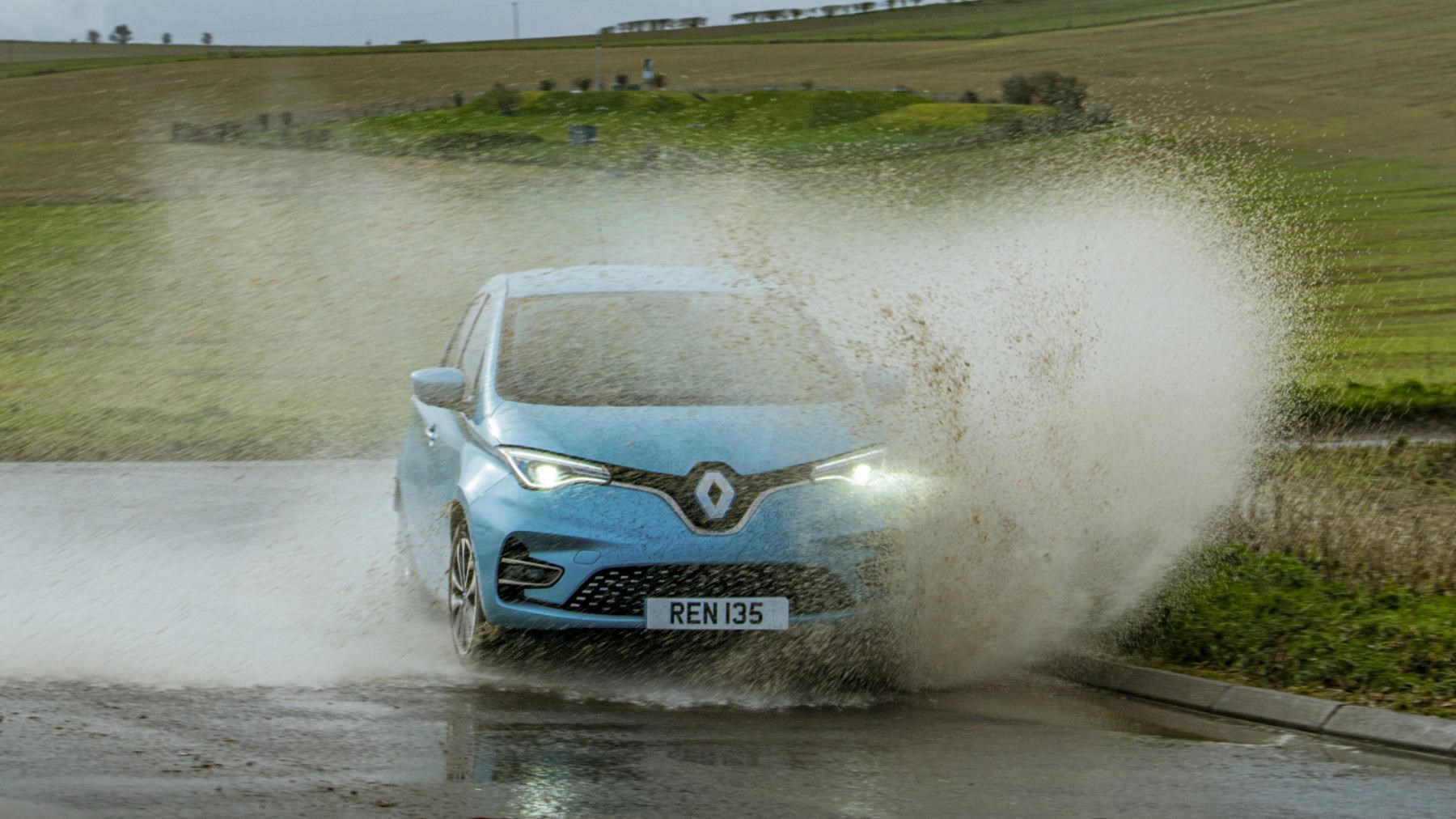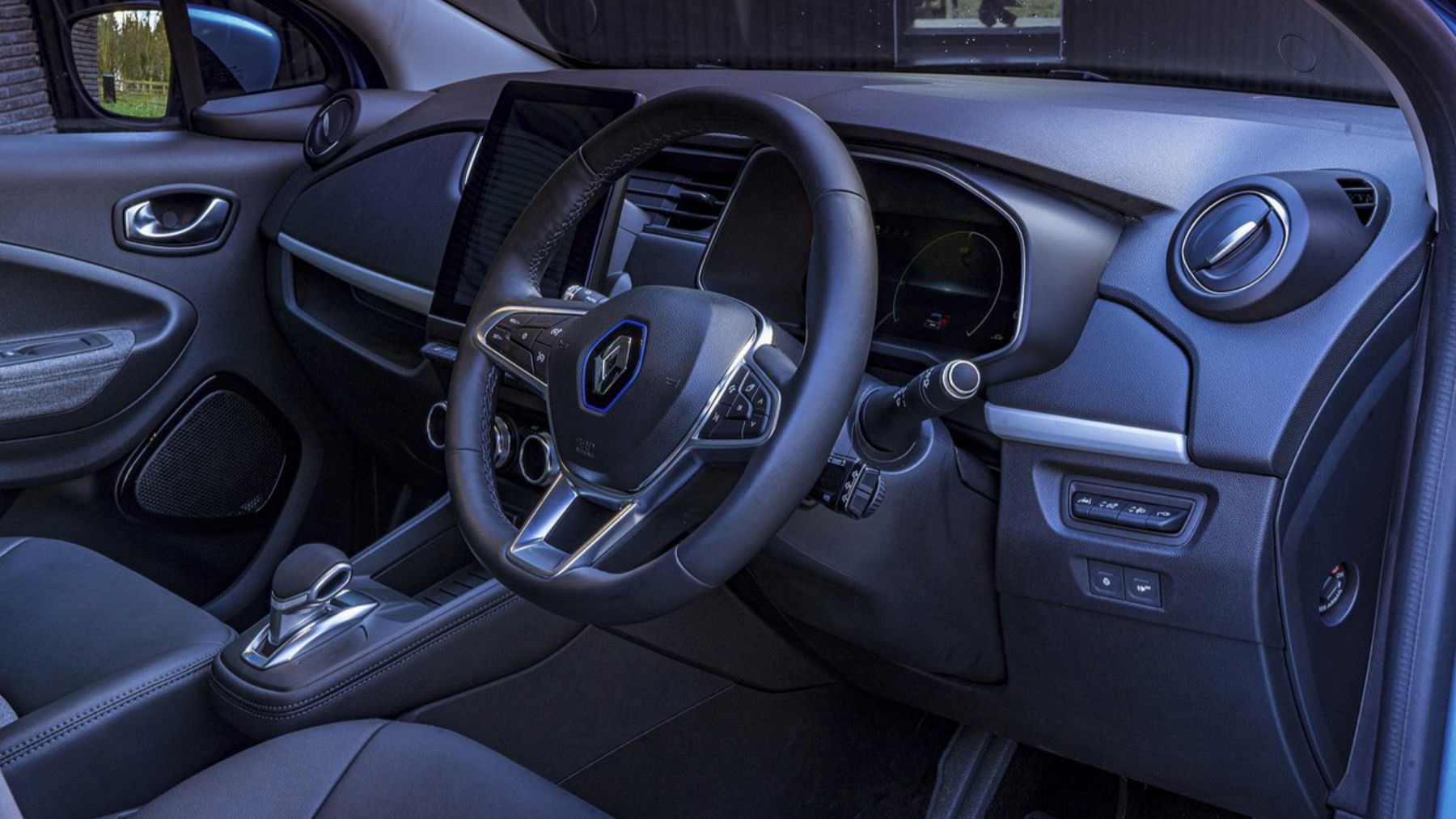► Maximum polish for Renault's EV
► One of the most popular electric cars in Europe
► New R135 model boosts performance
The progress that’s been made with electric cars in the last few years is quite something: the Renault Zoe has taken just three generations to double its range. And that’s without moving on to next-generation components like solid state batteries or graphene technology.
Strides like these almost always come with a chunky price tag attached, but the Zoe should be applauded for sticking to its affordable roots. It’s still one of the cheapest electric vehicles on sale, and offers terrific value for money.
Small electric cars like this attract both tech and eco enthusiasts, but the Zoe’s great achievement is that it can also pull in buyers who just want a new car, eclectic or otherwise. Even Clio buyers are making the switch, such is the capability of the Zoe.
Isn’t the Renault Zoe quite a big seller?
Compared to its rivals, absolutely. These days it’s actually the second best-selling EV in Europe, beaten to top-spot by the Tesla Model 3.
Best used electric cars: the CAR guide
So what did Renault have to work on? Well, the interior was showing its age, the range took a hit from the shift to the more realistic WLTP tests, and don’t get us started on the placement of the cruise control buttons in the cabin. Room for improvement, then.

This latest update – taking in the interior, exterior and drivetrain – aims to address those issues, and on paper at least it appears to have worked. This generation of Zoe will be worth £3,000 more after three years of ownership than the old one thanks to more equipment and a big boost in desirability.
Third time's the charm for Zoe?
Throughout the evolution of tech, the first generation is for early adopters, the second gen addresses the biggest issues, and almost invariably the third revision is the one that nails it for the majority of customers. Take the iPhone - the first one didn't even support the latest network tech, the second one was a little better, but the third, 3GS, added video and all the features users needed. And now you can't go anywhere without seeing someone using one.
Like the iPhone, the Zoe's appearance hasn't changed a huge amount as it evolves into the third generation, but it feels less like Renault has simply refined a few areas of this car with its standard facelift polish, and more that it just drove the car wholesale into a massive vat of the stuff.
It’s still not perfect, and we’ll get onto that later, but the process of incrementally improving so many facets at once has resulted in a significantly better car overall.
Let’s start with the drivetrain, and those easily confused by the previous car’s offering of different battery sizes and charging rates can delight in the news that this time around there’s just one choice to suit all drivers.
It’s the same physical size so doesn’t encroach on interior space but thanks to improved architecture and chemistry it now has more power – 52kWh – or the same as 4,727 iPhones, good for a real-world range of 245 miles. Or in other words, what the old one unrealistically promised under more relaxed NEDC testing.
Surely it takes ages to charge...
AC charging times have gone up as a result so a fill from empty on your 7kW wallbox will take 9h25min, or three hours at a public 22kW point. Plugged into a three-pin socket, you'll be waiting 30 hours to recover from a 250-mile drive.
On the other hand, if you're driving that far you'll be passing some of the tens of thousands of charging points sprouting from the landscape, at least in the UK. New for this generation of Zoe is a 50kW DC charger that’ll zap your car to full in 1h10min. This costs £750 and is not available on the base trim, which initially seems a bit mean, but Renault reckons because 80% of charging will be done at home or the office anyway, there’s little point making this standard equipment.

The charging habits of electric car owners are probably best saved for another conversation but look: we all need to stop obsessing about how long it takes to go from 0-100% in one hit. Much more relevant is the fact you get 75 miles in the tank in one hour from a public 22kW charger, or 90 miles in 30 minutes at a 50kW charger.
If you plan on making frequent long journeys in a Zoe, that £750 option is well worth it. If you're just using it for typical urban routines, you'll be fine without it. Using a Zoe for shopping trips, school runs and typical commuting, you'll barely notice the time or cost of charging even on a household socket.
Is it fast like other electric cars?
As well as the existing R110 motor with 107hp you can now pick a punchier R135 version with 134bhp and 181lb ft of torque. This is important because the Vauxhall Corsa-e and Peugeot e-208 have, you guessed it, 135bhp.
You still get a single-speed gearbox feeding power to the front wheels, but the 0-62mph time of the more powerful Zoe is now under ten seconds for the first time. Not hot hatch fast but usefully quicker when driving outside of the city.
Leaving the confines of 40mph limits and built-up areas, the Zoe's weaknesses are more apparent. Even with the 52kWh battery and greater torque of the R135, the 254 mile range falls to 149 miles if you drive at a sustained 70mph.
Renault says going from 50 to 75mph, like when you’re joining a motorway or overtaking something on a country road, is now 2.2 seconds quicker than before, but the impact on range might make you think twice anyway. It feels livelier than the previous Zoe, responding quickly and confidently to a prod of the throttle. The old car wasn’t painfully slow but it always felt like it was building to a peak that never arrived.
You also now get access to a stronger regenerative braking ‘B’ mode. It's not as powerful as the Nissan Leaf’s one-pedal driving set up, but it certainly slows the car down more abruptly when you take your foot off the accelerator. So much so that you need to carefully meter out its effects in order to not tip the suspension balance into a nosedive.

So it’s softly sprung?
The Zoe isn’t really pitched as a driver’s car so you shouldn’t be expecting Megane RS Trophy levels of involvement but there is a roly-poly nature that still separates this from in-house ICE rivals. This has always been the case, frankly, and does at least mean it rides nicely, at least in base form. The R135 GT-Line has a slightly harsh undertone that thumps and bumps over road imperfections, yet still leans in a stereotypically Gallic way around the bends.
It’s not actively bad to drive – the low centre of gravity helps to keep things reasonably in check, and there’s stacks of grip on offer, but you can unsettle the body through successive bends with very little effort, and fast roundabouts feel reckless.
The steering is also that anti-dream combo of being quite light but also devoid of feel, so you’re never really 100% sure how much you need to turn it in order to make the car go where you want. But let’s get some perspective here – at its heart this is an electric car designed for short city trips and the occasional longer jaunt. Make it any more fun to drive and people will complain they’ve drained the battery in half the claimed mileage due to overly-spirited driving.
You said the Renault Zoe interior was much better…
A huge leap, frankly, from the old car thanks to significantly nicer materials and loads more tech. You still sit up super high like you’re in a Captur, but that odd faux-futuristic dial screen has gone, replaced with a more conventional 10.0-inch digital setup.
Even on the most expensive model, the seats are pretty basic. The generously squashy pads have no height adjustment and just the bare minimum of distance and backrest tweakage. There's a hint of Renault 5 cool in the one-piece back and crudity. It's tempered by the knowledge you didn't just pay Renault 5 money, and you can sit on far nicer perches for almost £30,000.
The dashboard's LCD displays media or sat-nav info between a speedometer and efficiency readout, behind a new steering wheel with actual buttons for the cruise control, which were previously placed somewhat bafflingly behind the gearlever and unlit, like in all Renaults.

As standard you get a 7.0-inch infotainment screen (the mid-grade option on the Clio) which comes with Android Auto and Apple CarPlay as standard, and sat-nav in mid-spec cars. Move up to the top trim and you get a 9.3-inch portrait screen, which is very good indeed.
The interior has been given a visual and environmentally friendly uplift with a swathe of material made from recycled seat belts and bottles, plus there’s a total of 22.5kg of recycled polymer parts in and around the cabin.
Less obvious improvements include an electronic gear shifter and parking brake, replacing the distinctly anachronistic mechanical items in the old car. This also means you can now park up, turn the car off and walk away without having to select P or pull the handbrake - good for ease of use and also for freeing up space for two cup holders and an optional wireless phone charger.

Space in the back is the same as before – fine for head, less for leg thanks to that high-rise floor, but there’s a fifth seat and no transmission tunnel to get in the way. The boot’s unchanged too - 338 litres – which Renault said was an absolute red line for Zoe drivers. They like big boots and they cannot lie.
Tech-wise a raft of new sensors means you can get things like autonomous braking and active lane keep, blind spot warning and traffic sign recognition. You can even get auto high-beam for the now standard LED headlights. Oh, the Corsa-e comes with those as well, coincidentally.
Renault Zoe R135: verdict
While the previous Zoe felt like it was making a big noise (at least under 20mph) about being a silent electric car, this version appeals more to conventional car buyers who want something that looks and feels like a Clio, but just happens to have a plug socket on it and a recording of robotic whalesong to alert pedestrians.
With every update and facelift that passes the Zoe becomes more and more desirable for actual, mainstream car buyers, not just tech evangelists or off-gridders with a roof-full of solar panels. We’re looking at the tipping point here, people. As evidenced by the glut of new, small EVs like the Honda e, Mini Electric and new Fiat 500.
Check out our Renault reviews